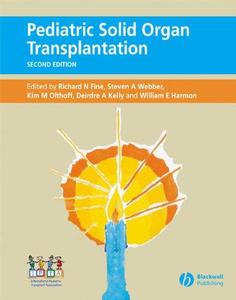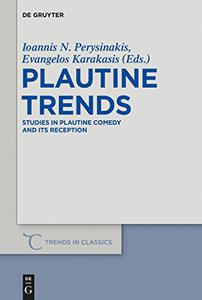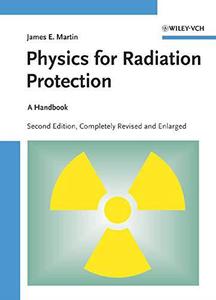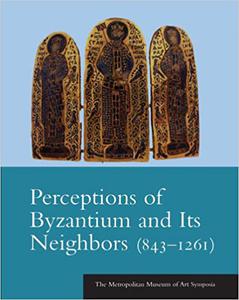 Pediatric Solid Organ Transplantation, Second Edition By
Pediatric Solid Organ Transplantation, Second Edition By2007 | 496 Pages | ISBN: 1405124075 | PDF | 10 MB
Pediatric Solid Organ Transplantation is a comprehensive and succinct text on all aspects of pediatric solid organ transplantation. It provides a ready source of reference, to both the basic science and organ specific surgical technique and after care. This second edition has been extensively updated in light of recent developments in this rapidly advancing area.The only textbook devoted to the field of pediatric transplantationA definitive reference for all those interested in improving the care and quality of life of children undergoing solid organ transplantation Section on immunosuppression has been expanded by four chapters to include sections on;- mechanisms of action- therapies for the sensitized patient- post-transplant lymphoproliferative disorders- organ toxicities of immunosuppressive therapy A new section has been added on the many topics related to quality of life that effect survivors of pediatric transplantation International editorial and contributor team represents a wide geographical range and contains both recognized leaders and emerging expertsWhether you are an established sub-specialist in pediatric transplantation, a transplant surgeon, or a pediatric specialist in a related area, this book will answer all your questions about care of the pediatric patient before, during, and after transplantation.Content: Chapter 1 The Immune Response to Organ Allografts (pages 1-11): Manikkam SuthanthiranChapter 2 Allorecognition Pathways (pages 12-20): Nader Najafian and Mohamed H. SayeghChapter 3 Costimulation (pages 21-29): Elizabeth Ingulli and David M. BriscoeChapter 4 The HLA System and Histocompatibility Testing for Organ Transplantation (pages 30-39): Rene J. DuquesnoyChapter 5 Gene Polymorphisms and Pharmacogenomics (pages 40-46): Robyn Temple?Smolkin, Gilbert J. Burckart and Adriana ZeeviChapter 6 Genomics and Proteomics as Research Tools (pages 47-55): Elaine S. Mansfield and Minnie M. SarwalChapter 7 Tolerance: A Review of Its Mechanisms in the Transplant Setting (pages 56-65): Alan D. SalamaChapter 8 Mechanisms of Action of Immunosuppressive Agents (pages 67-76): Alan M. KrenskyChapter 9 Induction and Maintenance Immunosuppression (pages 77-88): William E. HarmonChapter 10 Novel Immunosuppressants (pages 89-94): Flavio Vincenti and Ryutaro HiroseChapter 11 Therapies for the Allosensitized Patient (pages 95-102): Alice Peng and Stanley C. JordanChapter 12 Infections Post?Transplantation (pages 103-113): Michael Green and Marian G. MichaelsChapter 13 Post?Transplant Lymphoproliferative Disorders and Malignancy (pages 114-123): Steven A. Webber and Michael GreenChapter 14 Organ Toxicities (pages 124-136): Vikas R. Dharnidharka, Carlos E. Araya and Mark R. BenfieldChapter 15 Historical Notes (pages 137-145): Vassilios E. Papalois and John S. NajarianChapter 16 Recipient Characteristics (pages 146-152): Sharon M. BartoshChapter 17 Evaluation of the Candidate (pages 153-160): Uptal D. Patel and Susan E. ThomasChapter 18 Donor Evaluation, Surgical Technique and Perioperative Management (pages 161-166): Zoran Vukcevic, Demetrius Ellis, Mark Bellinger and Ron ShapiroChapter 19 Pathology of the Kidney Allograft (pages 167-173): Arthur H. CohenChapter 20 Post?Transplant Management (pages 174-184): Jodi M. Smith and Ruth A. McDonaldChapter 21 Outcomes and Risk Factors (pages 185-190): Alicia M. Neu and Barbara A. FivushChapter 22 Historical Notes (pages 191-198): Silvio Nadalin, Massimo Malago and Christoph E. BroelschChapter 23 Recipient Characteristics (pages 199-206): Udeme D. Ekong, Estella M. Alonso and Peter F. WhitingtonChapter 24 Evaluation of the Candidate (pages 207-212): Binita M. Kamath and Elizabeth B. RandChapter 25 Donor Evaluation, Surgical Technique and Perioperative Management (pages 213-225): Jean C. Emond, Steven J. Lobritto and Dominique JanChapter 26 Pathology of the Liver Allograft (pages 226-231): Maria Parizhskaya and Ronald JaffeChapter 27 Post?Transplant Management (pages 232-241): Kyle Soltys, Robert Squires, Rakesh Sindhi and George V. MazariegosChapter 28 Outcomes and Risk Factors (pages 242-250): Marc L. Melcher and John P. RobertsChapter 29 Historical Notes (pages 251-258): Steven A. Webber and William H. NechesChapter 30 Recipient Characteristics (pages 259-264): Charles E. Canter and David C. NaftelChapter 31 Evaluation of the Candidate (pages 265-270): Gerard J. BoyleChapter 32 Donor Evaluation, Surgical Technique and Perioperative Management (pages 271-281): Frank A. Pigula and Steven A. WebberChapter 33 Pathology of the Cardiac Allograft (pages 282-287): Maria ParizhskayaChapter 34 Post?Transplant Management (pages 288-298): Shelley D. Miyamoto and Biagio A. PietraChapter 35 Outcomes and Risk Factors (pages 299-306): W. Robert Morrow and Richard E. ChinnockChapter 36 Historical Notes (pages 307-313): Eric N. MendeloffChapter 37 Recipient Characteristics (pages 314-317): Eithne F. MacLaughlinChapter 38 Evaluation of the Candidate (pages 318-325): Albert Faro, Gary Visner and George B. MalloryChapter 39 Donor Evaluation, Surgical Technique and Perioperative Management (pages 326-335): Charles B. HuddlestonChapter 40 Pathology of the Lung Allograft (pages 336-339): Paul S. DickmanChapter 41 Post?Transplant Management (pages 340-348): Marlyn S. WooChapter 42 Outcomes and Risk Factors (pages 349-356): Stuart C. SweetChapter 43 Historical Notes (pages 357-360): Jorge ReyesChapter 44 Recipient Characteristics (pages 361-364): Jean F. Botha and Debra L. SudanChapter 45 Evaluation of the Candidate (pages 365-371): Stuart S. KaufmanChapter 46 Donor Evaluation, Surgical Technique and Perioperative Management (pages 372-382): Thomas M. Fishbein and Cal S. MatsumotoChapter 47 Pathology of the Intestinal Allograft (pages 383-386): Maria Parizhskaya and Ronald JaffeChapter 48 Post?Transplant Management (pages 387-393): Erick Hernandez, Tomoaki Kato, Andreas G. Tzakis and John F. ThompsonChapter 49 Outcomes and Risk Factors (pages 394-399): Douglas G. FarmerChapter 50 Growth and Puberty (pages 401-411): Franz SchaeferChapter 51 Cognitive Development (pages 412-417): Erik Qvist, Hannu Jalanko and Christer HolmbergChapter 53 Pregnancy (pages 425-436): Vincent T. Armenti, Michael J. Moritz and John M. DavisonChapter 54 Gynecologic Issues (pages 437-445): Gina S. Sucato and Pamela J. MurrayChapter 55 Transition to Adult Care (pages 446-453): Janet McDonagh and Deirdre A. KellyChapter 52 Psychosocial Adaptation and Adherence (pages 418-424): Eyal Shemesh



![S.T.A.L.K.E.R. 2 / STALKER 2: Heart of Chornobyl - Ultimate Edition (2024) [+UPDATE 23.12.2024 - v1.1.3] ElAmigos / Polska wersja językowa](https://i.postimg.cc/Zqd8RWGY/UZG8PBE.jpg)



















































![David Gilmour - Luck and Strange (2024) [FLAC]](https://i.imgur.com/everaBc.jpeg)
![Męskie Granie Orkiestra - Męskie Granie 2024 (2024) [FLAC]](https://i.imgur.com/FAyOxrM.jpeg)
![The Rolling Stones - Hackney Diamonds (2023) [FLAC]](https://i.imgur.com/wCkyyUN.jpg)
![Lady Gaga - Harlequin (2024) [FLAC]](https://i.imgur.com/dcgIA8D.jpeg)
![Natalia Kukulska - Dobrostan (2024) [FLAC]](https://i.imgur.com/bdljG3O.jpeg)
![Kaśka Sochacka - Ta druga (2024) [FLAC]](https://i.imgur.com/hORQKvn.jpeg)
![Kuba Sienkiewicz - Pani Bóg (2024) [FLAC]](https://i.imgur.com/qijCx8Z.jpeg)
![Lanberry - Heca (2024) [FLAC]](https://i.imgur.com/8P7QfeR.jpeg)
![Sara James - PLAYHOUSE (2024) [FLAC]](https://i.imgur.com/m4f8OKg.jpeg)
![Grzegorz Hyży - EPILOG (2024) [FLAC]](https://i.imgur.com/8DA2sBr.jpeg)
![Myslovitz - WIECZORAMI CHŁOPCY WYCHODZĄ NA ULICE (2024) [FLAC]](https://i.imgur.com/l9mMtIG.jpeg)
![Krzysztof Zalewski - ZGŁOWY (2024) [FLAC]](https://i.imgur.com/vh48RAc.jpeg)
![Krzysztof Cugowski - Wiek to tylko liczba (2024) [FLAC]](https://i.imgur.com/SBzgqe2.jpeg)
![Nosowska - Kasia i Błażej (2024) [FLAC]](https://i.imgur.com/mObvVXQ.jpeg)
![sanah - Pianinkowe Kaprysy (2024) [FLAC]](https://i.imgur.com/pVjjPAa.jpeg)
![Kwiat Jabłoni - Pokaz slajdów (2023) [FLAC]](https://i.imgur.com/diERHfZ.jpg)
![Robert Cichy - Spacer po Warszawie (2024) [FLAC]](https://i.imgur.com/ixleU9o.jpeg)
![Viki Gabor - Terminal 3 (2024) [FLAC]](https://i.imgur.com/Q1KCnDs.jpeg)
![Sanah - Kaprysy (2024) [FLAC]](https://i.imgur.com/71OZm4h.jpeg)
![Męskie Granie Orkiestra - Męskie Granie 2023 (2023) [FLAC]](https://i.imgur.com/U4YHo8d.jpg)




